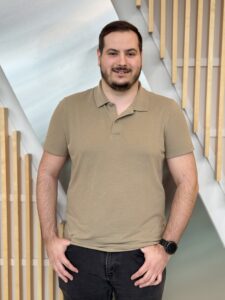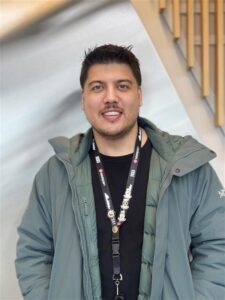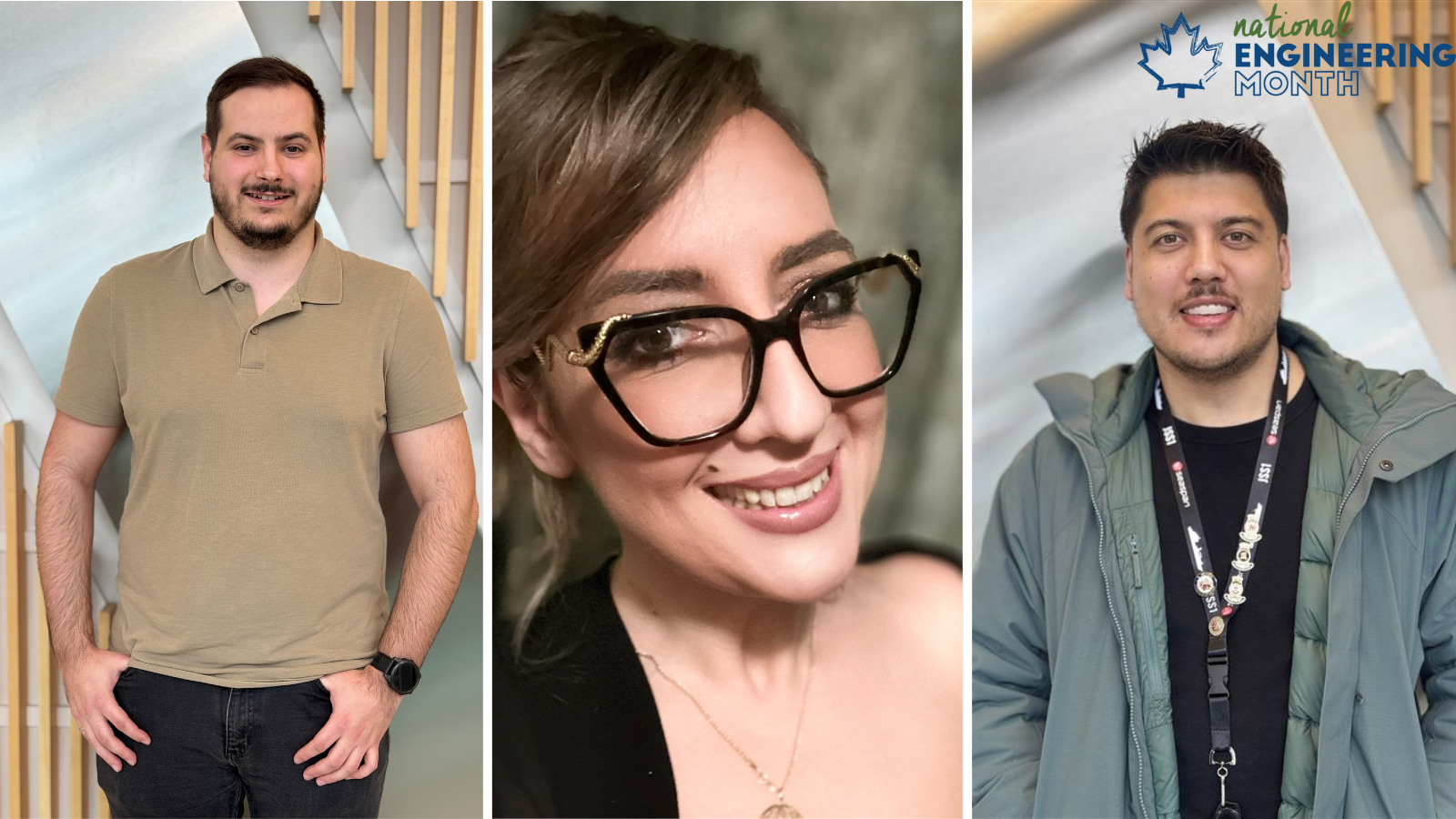March 31, 2025
National Engineering Month is held annually in March, serving as a celebration of the heart and soul of engineers – their passion, commitment, and action toward making the world a better place. We’re proud of the skill and dedication that Seaspan engineers bring to work each day, and we took the opportunity to meet a few of the engineers helping drive improvement across JSS, Polar and Project Agnostics at Vancouver Shipyards.
 Paul Kosteckyj | Lead, Structural Engineering, Polar
Paul Kosteckyj | Lead, Structural Engineering, Polar
How long have you been at Seaspan, and what is your role?
I’ve been at Seaspan full time since September 2019, starting as a junior engineer with the Liaison Engineering Team, originally joining as an intern for four months prior to that position. My current role is both a people/project lead in the structural engineering department with my main focus being the Polar project.
What inspired you to pursue a career in engineering?
I’ve always enjoyed building things and problem solving. It’s what made shipbuilding so attractive with the almost Lego-like aspect of how we put it all together.
What is unique about engineering in a marine environment?
There are so many interconnected systems to consider that all have their own unique weight and spatial constraints to fit within a limited space. It’s a challenging but rewarding problem to be solving.
Is there a project you’ve worked on recently that makes you feel a sense of pride?
Recently, it has been the Polar project. The most significant milestone in the early part of my career was being selected to go over to Finland for two years with a group of other Seaspan employees and work with the team there on the Polar project. Seeing the design mature and all the preparation work for the upcoming cut steel has made me proud to see what has been several years of work for many of us that’s about to come to life.
 Marica Matica | Specialist III, Technical Authority, Class & Flag
Marica Matica | Specialist III, Technical Authority, Class & Flag
How long have you worked at Seaspan, and what is your role?
I’ve been with Seaspan for almost nine years and have over 15 years of shipbuilding experience. My role focuses on Engineering Services and Technical Authority tasks, making sure vessels meet all regulatory and statutory requirements before delivery. It’s a dynamic role that keeps me involved with different teams and projects, always giving me a chance to learn something new.
What inspired you to pursue a career in engineering?
In Croatia, the country I come from, students must decide on their career path at the end of elementary school. As much as I’d love to say that when I was 15 years old, I was so mature that I knew exactly what I wanted to do and that I chose engineering purely out of a passion for math, creation, and problem-solving, that wouldn’t exactly be true. The city where I grew up is home to the largest shipyard in the country, and as a result, many companies in the area depend on it. Looking back, I think my decision to pursue engineering was strongly influenced by my surroundings. But my true love for ship construction, calculations, hull lines, and production grew over time. I was lucky to be taught by professors who had years’ experience in shipbuilding, real mentors. It wasn’t an instant passion; it was something that developed year by year, as I learned more, faced new challenges and realized just how much I enjoyed the complexity and creativity of this field. What started as a practical choice evolved into something much more: a career that challenges me, excites me, and continues to shape who I am.
Is there a project you’ve worked on recently that makes you feel a sense of pride?
That’s an interesting question, almost like asking me which child I love more. Equally, of course! Though at any given moment, it depends on which one is giving me less trouble. If I had to pick one, JSS was my first “baby”. It challenged me in ways I never expected, pushing me to learn, grow and adapt. From my first reading sessions and uploading technical requirements in ARAS, to designing digital binders, and finally, witnessing the ship touch the ocean, it was an unforgettable journey. Or maybe OFSV, where I had the incredible experience of attending Sea Trials and taking on my first major task of working with a Classification Society. That was a turning point when I truly started to see myself as a key player in the process. By the time OOSV came around, I had gained so much confidence, yet the ship still reminded me how much room there is for improvement.
 Aaron Gill – Manager, Project Engineering (Test, Trials and Acceptance), JSS
Aaron Gill – Manager, Project Engineering (Test, Trials and Acceptance), JSS
How long have you worked at Seaspan and what is your role?
I joined Seaspan in April 2023 as a Project Engineering Manager. My role is primarily focused on coordinating and prioritizing engineering resources to support Production on JSS, with a direct emphasis on key milestones, commissioning, and delivery. I work closely with engineers to ensure solutions are pragmatic and operationally sound, while also liaising with the customer to keep them informed and requirements are well understood.
What inspired you to pursue a career in engineering?
I was always more STEM inclined at school and it was my intention to be an engineer in some form. After finishing high school, I pursued mechanical engineering through the Australian Defence Force, which set the foundation for the rest of my career.
What is unique about engineering in a marine environment?
Most of my engineering career has been within the marine environment ashore and at-sea. I was in the Royal Australian Navy as a Marine Engineer Officer, and this gave me skills, knowledge and experience in operational engineering and crisis management (serving as the Damage Control Officer). I have also worked in three different shipyards – Adelaide, Halifax and Vancouver.
What sets engineering in a marine environment apart, particularly with naval vessels, is the scale and complexity of engineering involved. We need to create ships that are battle ready and able to support themselves for extended periods away from shore in a variety of extreme conditions. The design effort to integrate these systems to maximize capability and habitability is no easy feat. Similarly, maintaining and sustaining these vessels in-service presents a range of issues often needing innovative and robust solutions.
